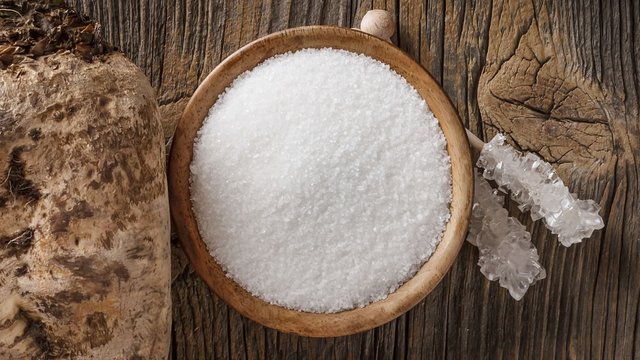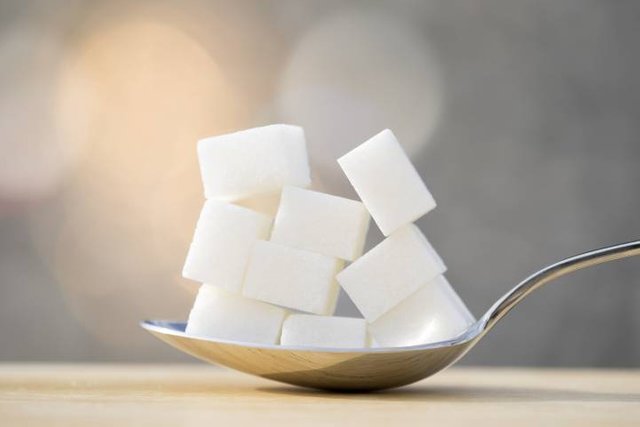The Ingredients : Sugar (part 2)

in this part i will write i specify this part into pastry world as it is widely being use for food production.
Sugar is a sweetener substance that is made up of a molecule known as sucrose. Sucrose, while found in all plants, but is available in very high quantities in sugar cane and sugar beets. Therefore, these are the plants where almost all of our sugar for baking is derived from.
The earliest sweeteners were honey, sweet fruit and syrups concentrated from fruit – an example is the *dibs made in the Lebanon. *Maple syrup and maple sugar were being made by the American Indians long before settlers arrived from Europe, and probably palm sugar, which is also made by boiling down sap, was made before cane sugar, as this involved squeezing out the juice, a slightly more advanced technology. In Present day, highly purified sucrose extracted from either sugar cane or sugar beet is the almost become an universal sweetener.
Sugar is being use for adding the sweetness in the product. Sugars come in many forms and from many sources. Pastry chefs usually select granulated sugar for creaming with plastic fats (butter, shortening, etc.) in the production of cakes, cookies, and similar products or for whipping with eggs (whether whole, yolks, or whites) in the production of cakes. Moist brown sugars are useful for bun fillings, cookies, cakes, and similar products. Superfine sugar is desirable for icings and high-ratio cakes (cakes that contain a higher ratio of sugar and liquid than typical cakes) made with the blending method. Powdered, or confectioners', sugar is used for flat (water) icings, stiffer cookies, tart crusts, and decor. Honey, glucose, corn syrup, and agave syrup are used for their distinctive flavors in specialty products, and they increase the shine of icings, frostings, and glazes. Molasses, a byproduct of sugar refining, imparts an unmistakable, earthy flavor and color to pastries, whiIe maple syrup is prized for its subtle flavor.
.jpg)
TYPE OF SUGAR
There are of course lots of different sugars that you’ll find that are all forms of sucrose and include:
Granulated sugar – Granulated sugar is a refined sugar that is white in color and is the most common and versatile type of sugar used in kitchen.
Caster sugar – Superfine sugar, also known as castor or caster sugar, is a more finely ground granulated sugar, though not as finely ground as powdered sugar. caster sugar is perfect for making cakes and whipping cream/egg with it
Icing sugar – Powdered sugar, which is also called confectioner’s sugar, icing sugar, or 10x sugar, is a very finely ground white sugar. Because powdered sugar is so finely ground it is also combined with a bit of cornstarch, or other starch used for dusting cakes and desserts and making butter icing
Light brown sugar – Brown sugar is granulated sugar that has molasses added into it. Light brown sugar has a small amount of molasses added while dark brown sugar has a larger amount of molasses added into it. Molasses is even more hygroscopic in nature than plain granulated sugar so it keeps baked goods even more moist and adds chewiness.often used for making cookies
Muscovado sugar – Muscovado sugar is an unrefined cane sugar that is similar in texture to brown sugar due to the molasses naturally remaining in this type of sugar. Muscovado sugar has a very strong molasses flavor, more so than dark brown sugar, and is more moist than regular brown sugar. Muscovado sugar can be found in both light and dark varieties, similar to brown sugar. Muscovado sugar is best used for baked goods where a strong molasses flavor is desirable, like ginger bread.
Tubirnado Sugar - known as raw sugar or sugar in the raw, is a type of sugar that has been minimally processed, used for decor and icing the product, adding crunchy texture into product
Pearl sugar, also called nib sugar, is a type of specialty sugar that is made by compressing granulated sugar into large hunks of sugar, used mainly for topping and garnishing baked goods.

THE PURPOSE OF SUGAR
Tenderizes:
sugar inhibit gluten development and starch gelatinization in baking process. Sugar is hygroscopic (it absorbs and retains moisture) and diverts a portion of the water from structure builders like gluten and starch, resulting in tender products.Extends shelf life:
This is also due to the hygroscopic properties of sweeteners. Honey, glucose, and invert syrups (made with equal amounts of fructose and glucose) keep products fresher longer than
other sweeteners due to their increased hygroscopic properties. A hygroscopic
ingredient attracts and retains moisture.Promotes leavening:
crystal ine sugar in the process traps air that is useful for leavening while whiping egg or whip cream. Sugar also help leaven baked goods in a variety of ways. When sugar is creamed with butter it forces a web of air to get trapped between the two ingredients. This web of air lightens and helps to leaven baked goods. promoting lift and rise in baked goods.Stabilizes egg foams:
The dissolved sugar inhibits the unfolding and subsequent linking of the proteins. This is especially important when making meringues, whether for leavening baked goods or for aerating mousses. Superfine sugar works best for this application because it dissolves more quickly than other granulations.Contributes to crust color and caramelized flavor:
Sugar caramelizes when it is heated over 320°F (160°C), A caramelized crust is the first part of a baked good to touch the tongue, and it delivers a pronounced flavor. Some flavors from the crust migrate to the
interior of the product, creating layers of flavor.Contributes flavor: Sweetness is one of the five tastes. Sweeteners such as honey, molasses, piloncillo, palm sugar, jaggery, demerara, and muscovado imbue pastries with their unique, characteristic flavors.
.jpg)
A TABLE OF SWEETNESS VALUES
Sucrose, or table sugar, is considered the control in comparing the sweetness values
of different sweeteners. It has a value of 100.
For example, if molasses were exchanged with sucrose (by weight), because it has a sweetness value of only 70, the baked product would not be as sweet.
Fructose : 172
Invert syrups : 102
Sucrose (the control) : 100
High fructose corn syrup : 100
Brown sugar : 97
Powdered sugar : 97
Honey : 80
Dextrose : 75
Molasses : 70
Maltose : 65
Corn syrup (enzyme converted) : 60
Malt syrup : 42
Corn syrup (acid converted) : 31
Lactose : 16
Source articles and photos :
http://bit.ly/2NGFJxY (makingsenseofsugar.com)
http://bit.ly/2ELWnJF (bakerbettie.com)
https://bit.ly/2C600bM (chinimandi.com)
Cook's Encyclopaedia (By Tom Stobart)
The Pastry Chef's Apprentice (By Mitch Stamm)